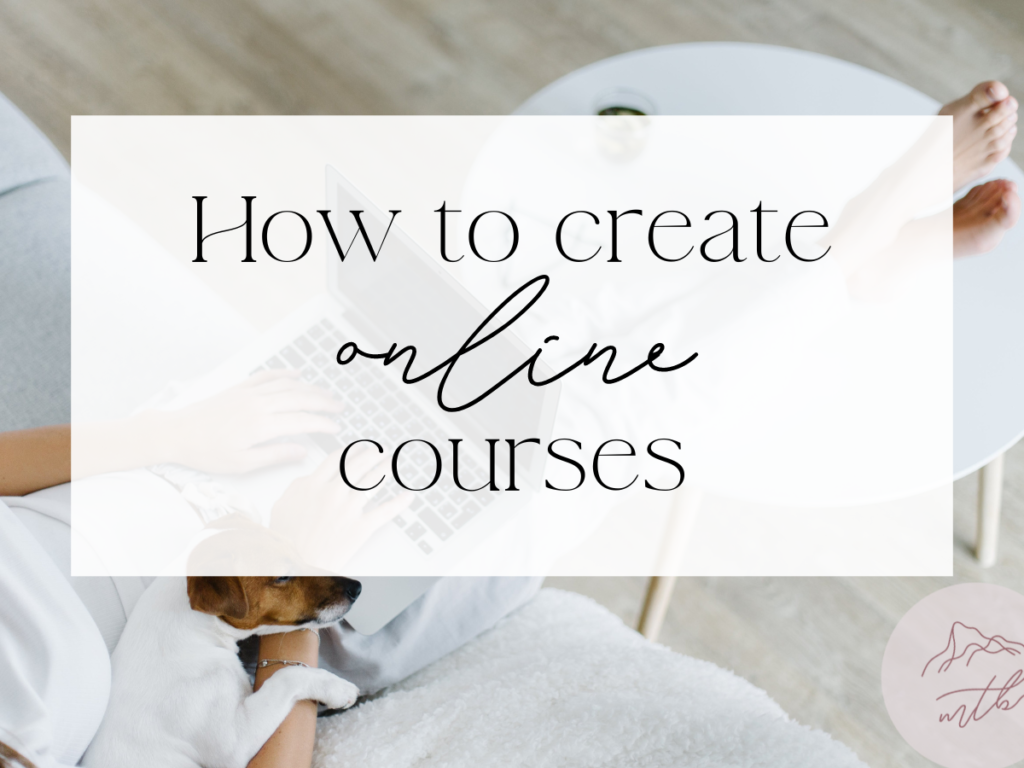This article may contain affiliate links. I may receive a nominal commission for purchases made through these links at no extra charge to you.
What is an online course?
An online course is a collection of videos and handouts that teach on a certain topic. An online course can teach about anything! Check out 100 profitable online course ideas here.
How do you create an online course?
Step 1: Find your course topic
Choosing a topic for your online course can seem challenging, but it doesn’t have to be! Your course topic should be a cross between something that you like and something you’re good at.
Step 2: Find an online course platform to host your course
Next, you need a place to host your online course. This platform is where your customers will login to watch your course.
Our favorite is Kajabi [grab a 30-day free trial here], but there are other options as well.
Step 3: Plan out the modules
Your course will consist of multiple modules. These modules will be the big-picture topics that you will go over in your course.
As part of choosing your course topic, you will do market research to see what problems people are facing related to your topic.
What do you notice are the overarching issues people have? Find commonalities and use these to structure the modules in your online course.
Those problems or pain points will be your modules. They are the stepping stones for getting your customers to a transformation.
Here are some examples:
Niche: Herb Gardening
Potential Modules:
Step 1. Readying your space
Step 2. Equipment to use
Step 3. What plants to buy and where to buy them
Step 4. How to plant them
Step 5. How to help them grow
Niche: Preschool Activities
Potential Modules:
Module 1: Preschool Basics
Module 2: Outdoor Activities
Module 3: Indoor Activities
Module 4: 4+ year old Activities
Step 4: Plan the lessons
Within every module, you will have multiple lessons. These lessons will break down the big-picture topics into smaller, more manageable chunks.
Think about how you can break up your modules into smaller pieces. You don’t want to overwhelm your customers with too much information in each lesson!
As often as you can, give your customer action steps or a chance to practice what they’ve learned at the end of the lesson.
Deciding what your customer’s action steps will be could be a good way to determine the topic for each lesson.
Some examples from above might include:
– Testing your soil
– Best equipment on Amazon
– Water activities
– Small space activities
Step 5: Record the lessons
Next, you’ll record your lessons. Check out the equipment I personally use to record in my Amazon store here.
For recording myself and the slides, I like Loom, QuickTime (free for Mac), and Canva (free).
You’ll edit the videos (I use iMovie), and upload them to your course platform.
Step 6: Add any extras
Next, you’ll create any printables, handouts, notes, templates, calendars, etc. that correspond with your course videos.
Your course members will appreciate anything extra you can give them to help them complete the course.
Step 7: Launch your course
Once you have finished creating all of the content for your course, it is time to launch it into the world! Cue the confetti–this is the part where you get to celebrate all of your hard work!
I love using a free challenge to launch my course, but you could also use a webinar, video series, or mini-course.







